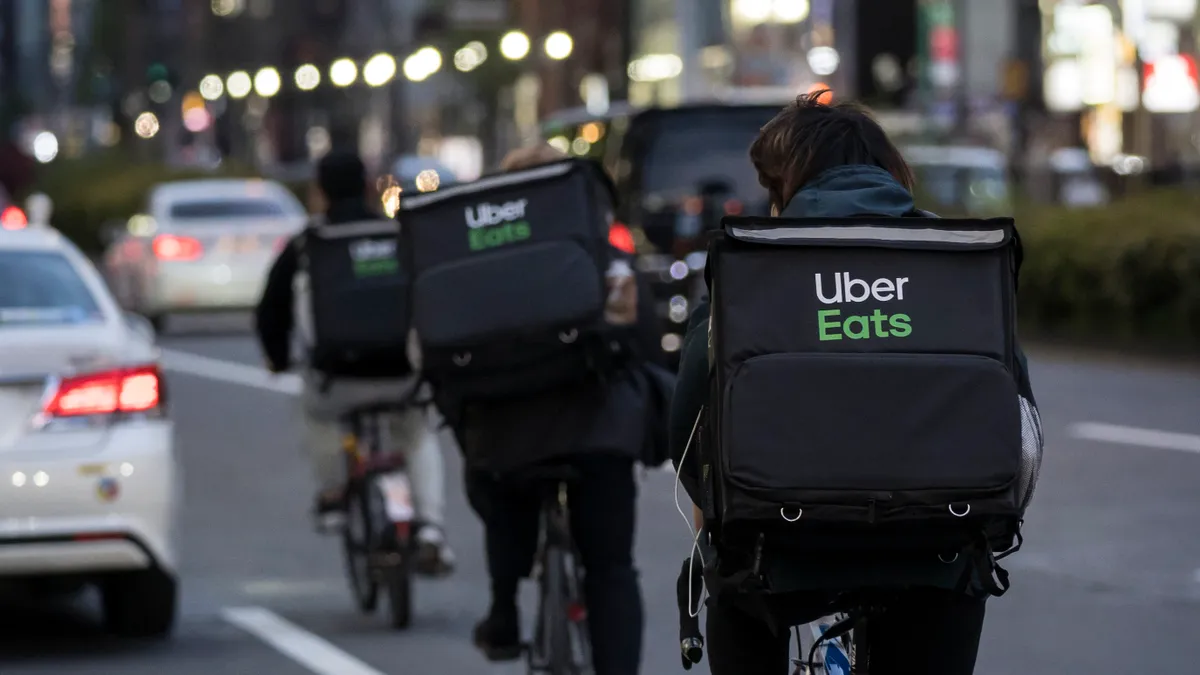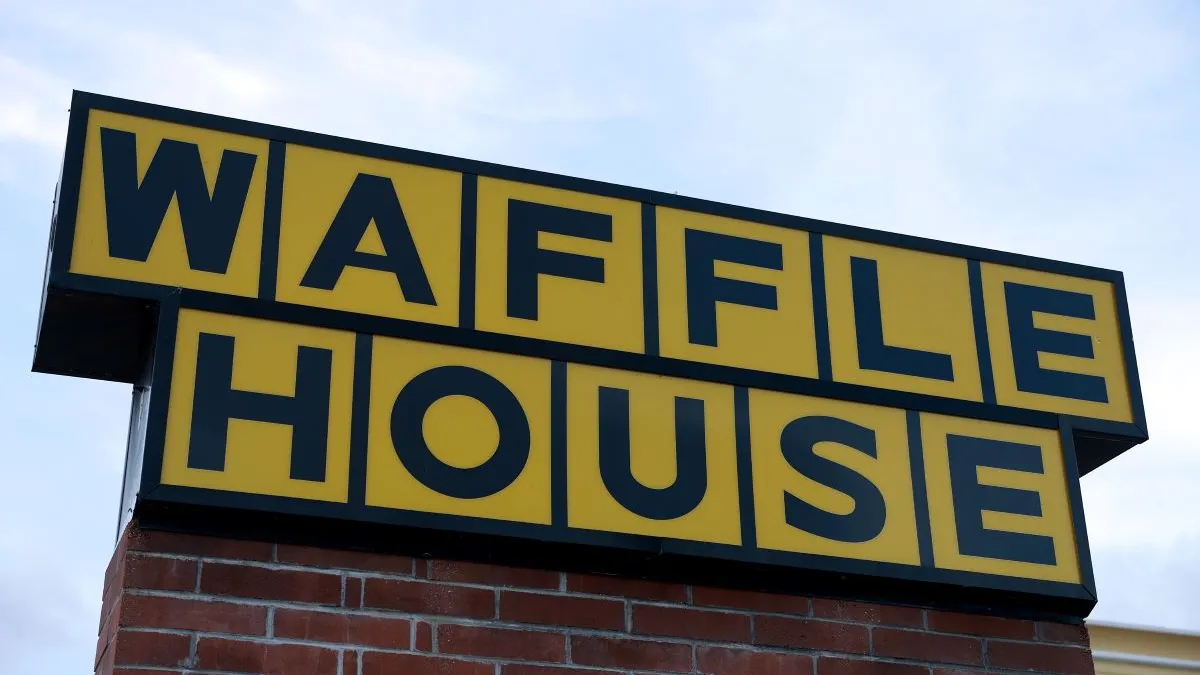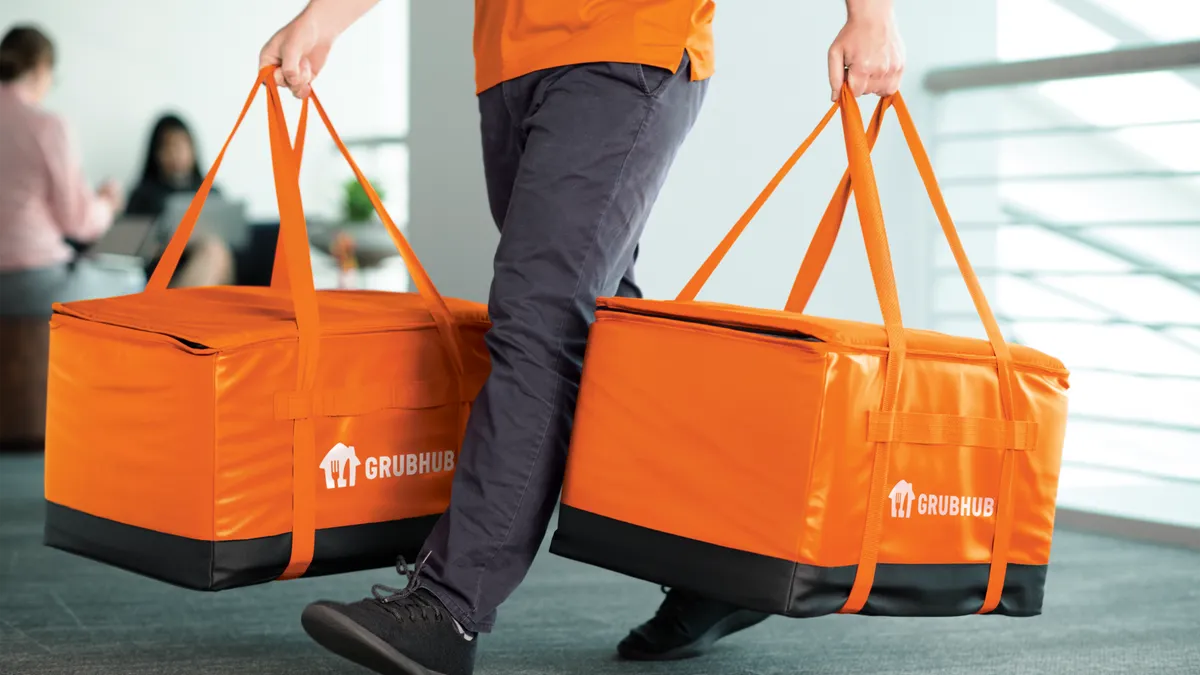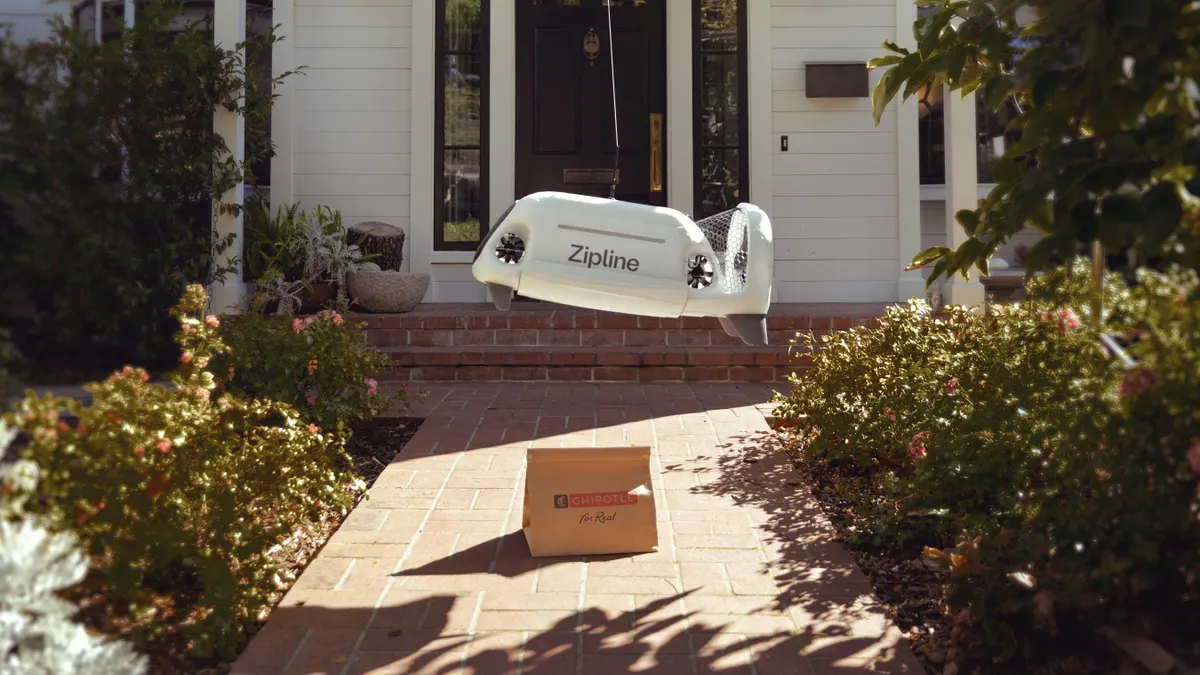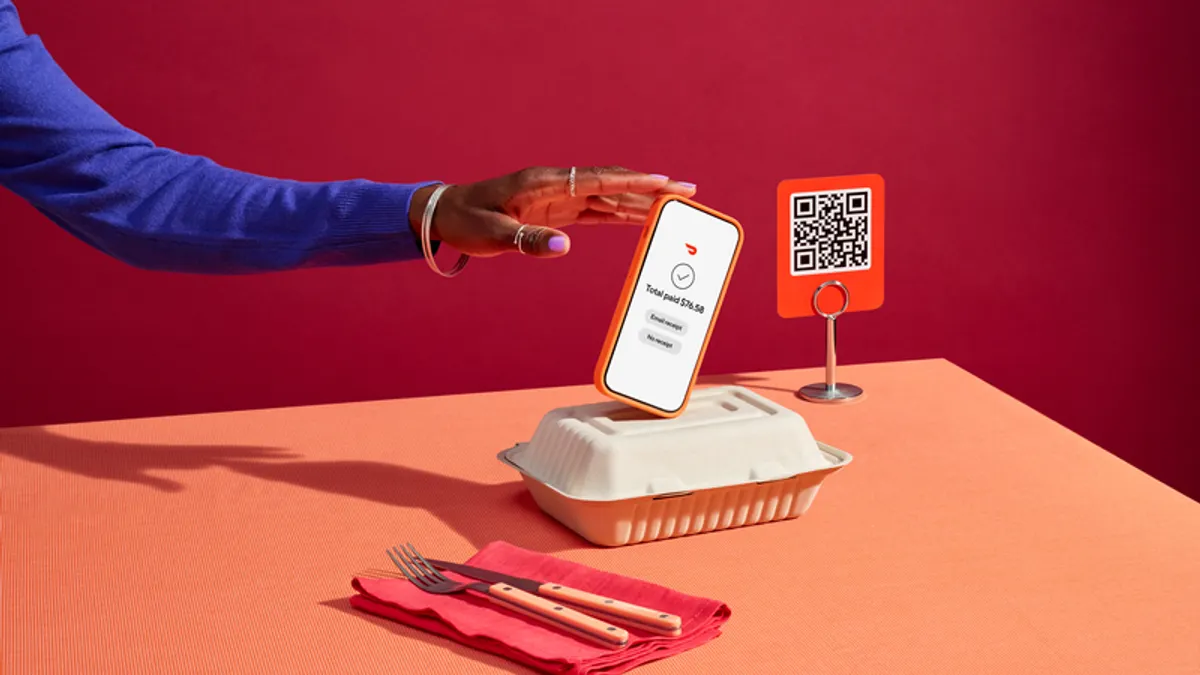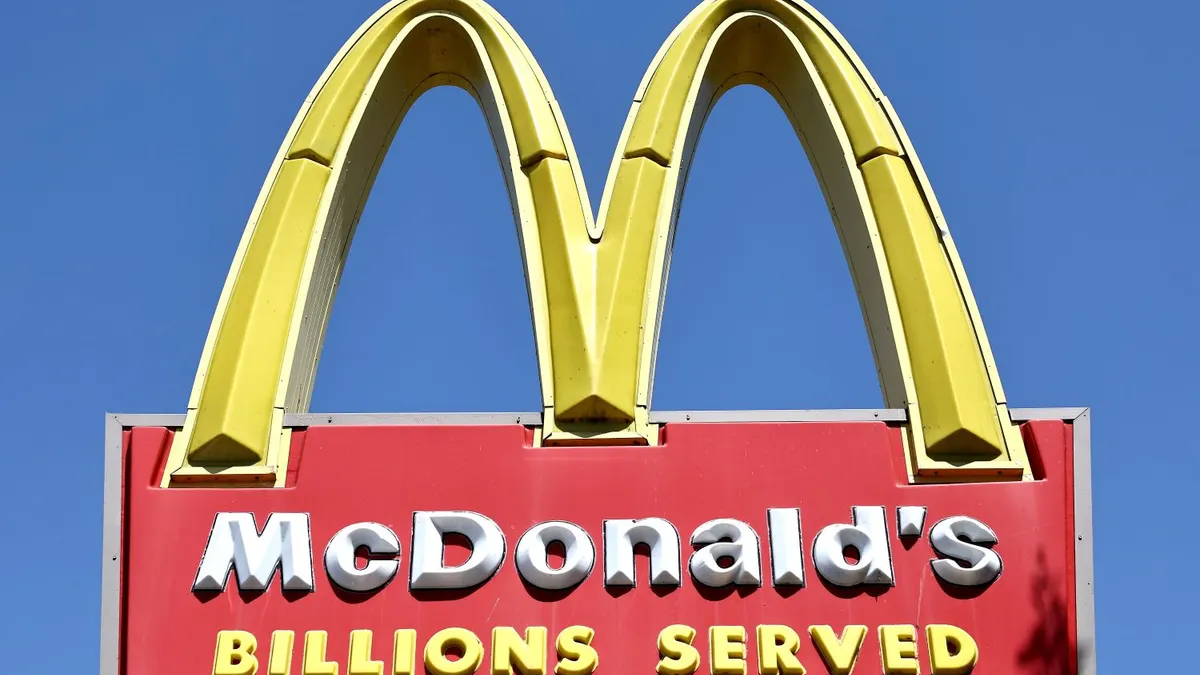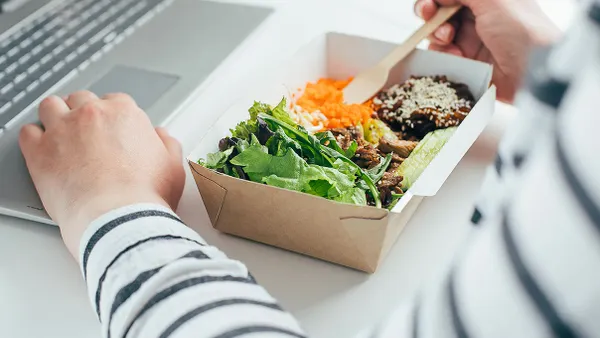This story is second in a series on the trends that will shape restaurants in 2022.
Uber Eats reached a significant milestone in 2021. In the third quarter, the company's U.S. restaurant delivery segment reached profitability on an adjusted EBITDA basis for the first time. DoorDash has also kept its adjusted EBITDA margins positive since the quarter ending June 30, 2020. For both aggregators, increased off-premise demand from diners and restaurants played an important role in improving business.
"The pandemic was obviously a terrific opportunity for the food delivery platforms to pull forward years and years of future customer acquisition to the present," Tom White, senior research analyst at D.A. Davidson & Co., said. "[They] were able to do it super efficiently. They didn't have to spend money to acquire these customers. Customers were seeking out these platforms because they were stuck in their homes and they wanted to eat."
Today, aggregators continue to expand into new businesses, like retail and grocery, and boost their courier counts, allowing them to reach more customers and increase order volumes for their core restaurant business. But maintaining profitability could become more difficult when marketing spend returns to pre-pandemic levels — especially as municipalities nationwide roll out laws to regulate the delivery market, such as permanent commission fee caps.
The hunt for profitability
Over the past two years, a surge in demand meant delivery firms didn't need to spend big on marketing and customer acquisition — factors that played an important role in companies' ability to generate a profit, analysts said. But this could change in 2022. As on-premise dining traffic starts to return to normal, third-party companies and restaurants will likely revert to traditional advertising spending strategies to attract customers to delivery, said Lyle Margolis, CFA and senior director at Fitch Ratings.
"I do think that we'll see some pressure on margins on the restaurant side but also on the third-party delivery side," Margolis said.
Delivery has been an unstable, competitive environment for some time, said Raj Joshi, vice president and senior credit officer at Moody's.
"I think it's difficult to say that the industry has reached or is close to sort of permanent profitability. I don't think that’s the case yet," he said.
Further consolidation between restaurant delivery firms will be inevitable as these companies seek to boost profitability, Joshi predicts. But while recent years were marked by major transactions, such as Uber's acquisition of Postmates and DoorDash's purchase of Caviar, increased regulatory scrutiny over M&A makes these types of deals harder to come by, Joshi said.
"That's why all the major providers are basically looking at foreign acquisitions," Joshi said.
DoorDash bought European delivery company Wolt in 2021, for example, which opened up 27 new markets for the aggregator.
Regulations squeeze delivery providers
Delivery companies will also face harsher regulatory oversight over their business practices, especially when it comes to commission caps, experts say.
While many recent commission fee caps have been tied to pandemic pressure and subsequent dining room restrictions, many have been phased out. But some cities are making these commission caps permanent, including San Francisco and New York City. Cities are also looking to enforce rules that protect delivery workers by creating standardized minimum pay and giving them access to restaurant bathrooms. Some municipalities are supporting restaurants by requiring aggregators to share customer delivery data with corresponding eateries.
Sharing customer information can be risky for delivery platforms since it could allow restaurants to potentially see that only a small percentage of customers actually use delivery, for example. Restaurants could also take that customer data and try to encourage those diners to order from their business directly, White said. However, DoorDash, Grubhub and Uber Eats have all challenged New York City’s data sharing law, and the city paused enforcement following DoorDash's lawsuit.
"The pandemic was sort of the catalyst for the restaurant industry to take a harder look at the value provided by these delivery platforms," White said. "Just because the pandemic is going away, I don't expect that [restaurant organizations] will stop pushing for their own self interest."
It may be too soon to see the overall impact these types of regulations will have on delivery segment profitability, since caps are expected to be litigated in court for some time. All three top delivery providers have challenged delivery commission fee caps in court.
In a post-pandemic world, Uber Eats will focus on engaging with regulators to make sure regulations preserve flexibility for all parts of the marketplace, Yadavan Mahendraraj, Uber's head of merchant operations in the U.S. and Canada, said. This means ensuring merchants have access to different pricing structures, for example.
"We do believe that those controls set a pretty dangerous precedent and actually can harm the businesses that they're meant to protect. We understand the intent behind the price controls, but believe they're a counterproductive tool," said Ryan Parietti, DoorDash's senior director and head of merchant strategy and operations.
The company has been focusing on offering restaurants a wide range of options so they can pick the plan that supports their business goals versus having a one-size-fits-all solution, he said.
Grubhub felt the biggest impacts from fee caps in New York City, which is one of its largest markets and has implemented the most aggressive delivery commission restrictions in the U.S. While losses related to fee caps peaked during the first half of 2021 as many caps have since expired, Grubhub continues to see a significant impact on its business in New York, Adam Dewitt said in October during the Just Eat Takeaway Capital Markets Day.
"We do believe that those controls set a pretty dangerous precedent and actually can harm the businesses that they're meant to protect."

Ryan Parietti
Senior director and head of merchant strategy and operations, DoorDash
"We believe all fee caps, which are effectively price controls, are illegal," Dewitt said. "We abided by the emergency orders introduced during the pandemic in order to help restaurants that were in the firing line of the pandemic closures. But we will vigorously fight any permanent fee caps, which are essentially arbitrary government interference in the private contracts."
A Grubhub spokesperson said the company will continue to focus on supporting restaurants.
"[Fee caps] have negatively affected how independent restaurants can effectively market themselves to drive demand, which severely impacts how many customers and orders are driven to these restaurants," the spokesperson said. "As a company, we are focusing on markets where we can build upon our existing strength and leadership, and expand to new verticals that will drive growth for the company and our restaurant partners."
Municipalities are also exploring whether to classify delivery drivers and couriers as full-time employees. Such classification would change how these workers are paid, and put delivery aggregators on the hook for employee insurance and other benefits.
"Until we have autonomous drone deliveries or autonomous vehicles, driver-related costs are likely just going … to go up," White said.
While Prop 22 in California kept drivers classified as independent contractors but gave these workers some benefits typically enjoyed by full-time employees, driver classifications could still evolve and threaten delivery firms' margins. In August, however, Prop 22 was overturned by a California judge. The law will remain in effect while the Protect App-Based Drivers & Services Coalition (backed by DoorDash and Uber) appeal the ruling.
There has been a lot of discussion in Washington, D.C., about trying to codify the role of independent contract drivers, Joshi said.
"To the extent that the regulatory environment remains supportive and doesn't become a major headache, I think there is a role for these delivery companies, and they are going to expand into delivery of a lot of things," Joshi said.
Expanding beyond restaurant delivery
While aggregators try to find ways to work with regulators, they are also expanding into new verticals and revenue streams to diversify and create additional profitable platforms. DoorDash, Uber Eats and Grubhub have all begun exploring or entering segments like convenience stores, alcohol and various areas of retail. DoorDash launched a suite of advertising offerings to help restaurants and CPG brands reach consumers on its platform in October, as well. Uber Eats began offering sponsored restaurant listings in 2020.
"We expect [aggregators] to continue to pull those levers as the restaurant delivery business starts to mature," Margolis said.
In addition to helping boost profitability, new verticals also attract new customers. Over the past year, Uber Eats has expanded into retail with the addition of Bed Bath & Beyond to deliver baby essentials and Him & Hers. It also acquired alcohol delivery platform Drizly in 2021 and launched grocery delivery in 2020.
"One of the things that we see is that a customer who orders from a new vertical actually orders two times more on the platform as a whole," Mahendraraj said. "This is not only an additive behavior in terms of extra things they get, but [it] increases overall engagement."
Uber Eats' new verticals team is almost like an incubator for the business, Mahendraraj said. The team will look at how consumer behavior changes when Uber Eats introduces new segments to ensure they aren't distracting or confusing to consumers, though that hasn't been the case so far, he said. Between September and early November, delivery gross booking grew 8% despite global restaurant reopenings, Uber CEO Dara Khosrowshahi said during the company's Q3 earnings call. The company reinvested in its new verticals in Q3 thanks to Uber Eats's profitability that quarter, CFO Nelson Chai said.
"We've continued to see sustained consumer engagement on delivery, lending further support to our belief that increased demand for all types of fast delivery is structural and will grow for the foreseeable future," Khosrowshahi said.
DoorDash recently expanded its grocery presence and entered the convenience segment, launching ultra-fast delivery through DashMart in New York City's Chelsea neighborhood in December. It added more grocery partners in 2021, including Albertsons, Schnucks and Farmstead, and expanded alcohol delivery into 20 states.
"One of the things that we see is that a customer who orders from a new vertical actually orders two times more on the platform as a whole."

Yadavan Mahendraraj
Head of merchant operations in the U.S. and Canada, Uber
"It's an opportunity to serve customers with a variety of occasions and provide the ability to order multiple-use cases," Parietti said, adding that DoorDash can now support different types of merchants, such as flower shops.
These channels also benefit its core restaurant partners by driving more customers to the marketplace, which then helps boost order volume on the platform over time, he said. Uber Eats leaned into that kind of consumer behavior by rolling out its Pickup and Go feature last spring, which allows rides passengers to order and collect meals and groceries while driving to their destination.
Grubhub has diversified its delivery offering by bringing about 6,000 convenience stores on its platform, and the company is testing its own convenience product in Brooklyn with a limited inventory. He expects the company to ramp up inventory and marketing over time.
Delivery on college campuses has also become a growth area for Grubhub. The service allows college students to use their meal plans to order from campus dining rooms and kiosks through the Grubhub app, Dewitt said, adding that it’s currently integrated on campuses that cover 3 million students.
"These students become great marketing targets for Grubhub during school and after they graduate," Dewitt said.
Grubhub has also taken its campus strategy and applied it to hotels and stadiums. In 2021, Grubhub partnered with Las Vegas Resorts World and FedEx Field, and is already seeing some initial traction, Dewitt said.
"This is a potential great source of new diners for us who order at the hotel or stadium, but then have a Grubhub account set up… that they can use to order Grubhub from their phone," he said.
New verticals can also attract new drivers.
"The more products you can offer consumers, the more consumers come to that marketplace. … The more consumers and the more volume that comes to the marketplace, the more opportunities there are for drivers. There's more margin and revenue that the delivery platform can invest in attracting more drivers if need be," White said.
Improving the delivery experience
Boosting courier counts has become an increased focus for aggregators, especially with staffing shortages potentially hurting the overall delivery experience.
Using Uber's logistics, Uber Eats is able to better calculate how long it will take for a driver to arrive at a restaurant and can figure out when the best time would be to send a courier to pick up the food when it is ready, Mahendraraj said. This requires being strategic about which courier to dispatch to the restaurant and how far in advance. Couriers might be sent out even before the restaurant starts preparing the food, for example, because the restaurant is quick and may take only two to three minutes to complete an order, he said.
"We can be thoughtful about how the different pieces of that puzzle work so that there's as little wasted time as possible," Mahendraraj said.
Uber Eats has invested heavily in the courier side of its business to create better delivery outcomes for consumers as well as merchants. That means making sure a courier is there to pick up the order from a restaurant in a timely manner so operations flow smoothly. Uber Eats has seen an 80% increase in couriers on its platform since January.
DoorDash added a SafeDash feature in November for its drivers to boost security for these couriers while they are on the job. It includes access to ADT staff, who can contact 911 on the drivers' behalf. The company had over 3 million couriers during Q3 2021 and earnings increased 9% compared to the year-ago quarter, according to a shareholder letter.
"As we've gotten into other categories, this is even offering Dashers even more choice and more flexible opportunities, whether it's doing grocery deliveries, convenience deliveries, etc.," DoorDash CEO Tony Xu said during the company's Q3 2021 earnings call.
Delivery is only going to expand and become a larger part of the e-commerce economy, analysts said. Delivery will become more than just one vertical and an area where consumers can get anything, Mahendraraj said.
In Asia, which has a more mature delivery segment, platforms have become super apps offering a wide range of services, White said. A lot of these companies now offer digital wallets and even financial products, which could be a future permutation for U.S. aggregators.
"It will be very interesting to watch whether that kind of concept works in the U.S. or gains traction with users or not," White said.



